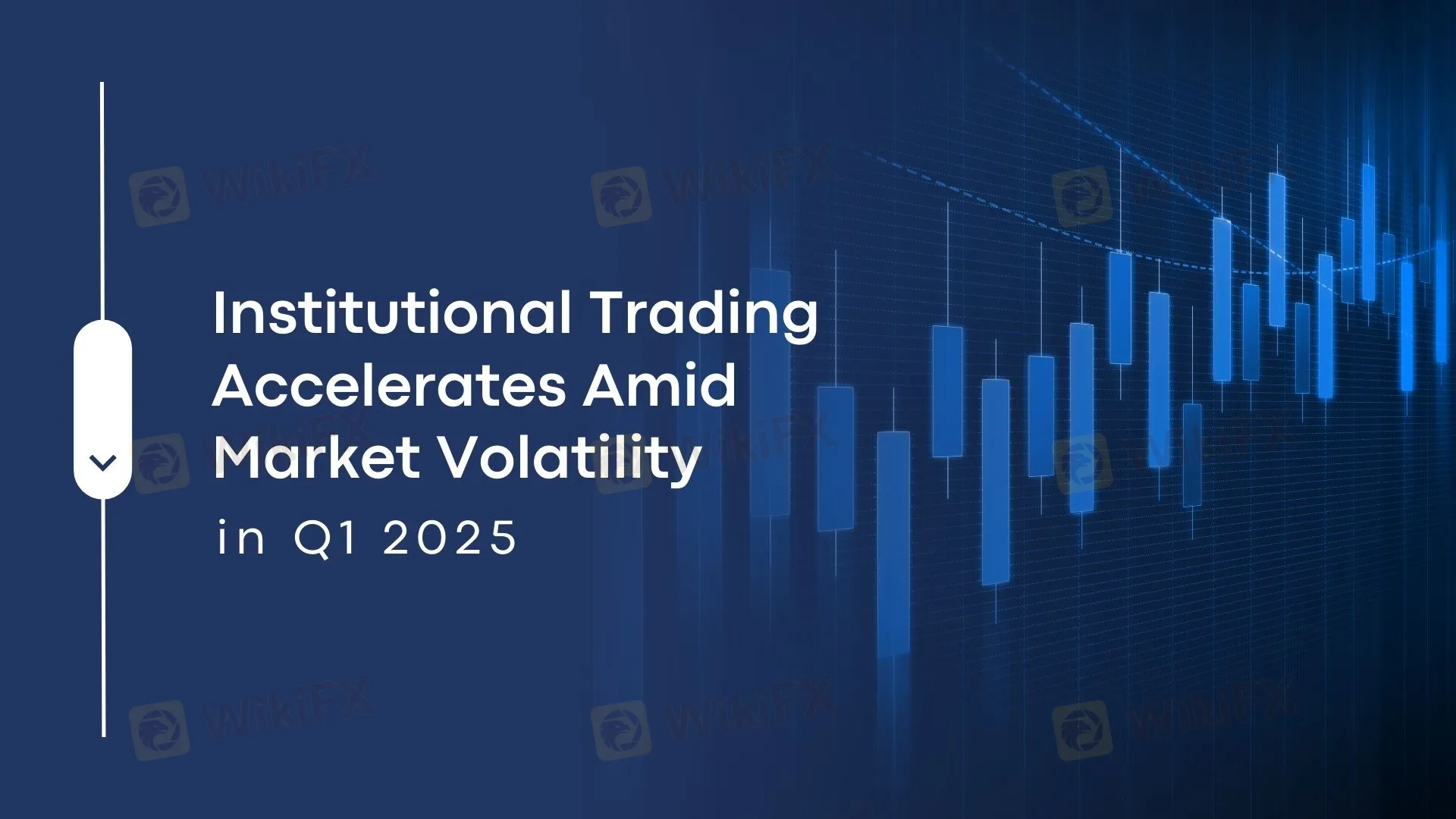简体中文
繁體中文
English
Pусский
日本語
ภาษาไทย
Tiếng Việt
Bahasa Indonesia
Español
हिन्दी
Filippiiniläinen
Français
Deutsch
Português
Türkçe
한국어
العربية
Institutional Trading Accelerates Amid Market Volatility in Q1 2025
Abstract:As global markets weathered a fresh wave of volatility in early 2025—driven by renewed geopolitical uncertainty and trade policy shifts—institutional trading activity surged across the board. The first quarter ended on a high note, with March delivering a particularly strong performance for both foreign exchange (FX) platforms and electronic brokerages.

FX Market Sees Record Institutional Activity
March 2025 marked the third consecutive month of volume growth for leading institutional FX platforms. According to market data, average daily volumes (ADV) across top-tier eFX venues rose by an average of 8.7% in March, building on February's 2.4% rise and January's 16% spike.

FXSpotStream led the surge, posting a record overall ADV of $116.89 billion in March—a month-over-month increase of 11.15% and a year-on-year rise of 41.55%. The spot segment alone reached $83.07 billion, while non-spot products like swaps and NDFs hit $33.82 billion, both setting new platform records.
Other institutional platforms followed suit:
- Cboe FX reported an ADV of $52.11 billion in March, up 8.5% from February.
- EuronextFX registered $31.33 billion, a 6.4% increase month-over-month.
- 360T came in at $36.81 billion, up 8.6% from the previous month.
The strong momentum was not merely a product of seasonal trends—it reflected active institutional positioning amid currency fluctuations, macroeconomic rebalancing, and growing expectations of central bank divergence.
Institutional Brokerage Metrics Also Surge
Institutional strength was mirrored on the brokerage side. Interactive Brokers (NASDAQ: IBKR), a leading global e-broker, recorded 3.471 million daily average revenue trades (DARTs) in March 2025, up 44% from March 2024. Though slightly down from February, the March DART figure still underscores sustained high-frequency activity from professional traders.

Client account growth at the firm remained steady, reaching 3.62 million accounts—up 32% year-over-year. Client equity stood at $573.5 billion, 23% higher than a year earlier. These numbers align with a broader trend of institutional investors increasing market exposure, leveraging both trading platforms and brokerage tools in response to volatility.
Whats Driving the Institutional Momentum?
Several concurrent factors contributed to the surge:
- Policy Risk: Renewed talk of trade tariffs in the U.S. triggered hedging demand in currency markets.
- Volatility as Opportunity: Macro instability turned into trading opportunities for institutions, especially in FX and derivatives.
- Platform Efficiency: Growth in eFX platforms and improvements in execution quality have made it easier for large orders to be managed with reduced slippage.
Outlook
As Q2 begins, market participants are watching for further shifts in central bank narratives, particularly around interest rates. Meanwhile, continued geopolitical friction and inflationary data releases are likely to fuel more trading opportunities. For now, institutional players appear well-positioned—and increasingly active—in capitalizing on a complex and fast-moving global trading environment.
Disclaimer:
The views in this article only represent the author's personal views, and do not constitute investment advice on this platform. This platform does not guarantee the accuracy, completeness and timeliness of the information in the article, and will not be liable for any loss caused by the use of or reliance on the information in the article.
Read more

Nonfarm Data Lifts Market Sentiment, U.S. Stocks Rebound Strongly
U.S. nonfarm payrolls for May slightly exceeded expectations, stabilizing investor sentiment and easing fears of a hard landing. This upbeat data sent U.S. equities broadly higher, led by tech stocks, with the Dow and S&P 500 posting significant gains. However, behind the optimism lies a fresh round of market debate over the Federal Reserve’s rate path, with uncertainty around inflation and interest rates remaining a key risk ahead.

OctaFX Flagged by Malaysian Authorities
OctaFX has been officially listed on warning lists by both Bank Negara Malaysia (BNM) and the Securities Commission Malaysia (SC). These alerts raise serious concerns about the broker’s status and whether it is legally allowed to operate in Malaysia.

TradingPRO: A Closer Look at Its Licences
In an industry where safety and transparency are essential, the regulatory status of online brokers has never been more important. For traders seeking to protect their capital, ensuring that a platform operates under recognised and stringent oversight can make all the difference. Keep reading to learn more about TradingPRO and its licenses.

Oil Price Breakout Incoming? Investors Should Stay Alert
Oil prices are hovering around a critical level, with potential yet to be fully unleashed. Investors must prepare for sudden changes.
WikiFX Broker
Latest News
SkyLine Guide 2025 Malaysia: 100 Esteemed Judges Successfully Assembled
Vantage Markets Review 2025: Trusted Forex and CFD Trading Since 2009
Why STARTRADER Is Popular Among Traders?
A Guide to Intraday Forex Trading You Can't Miss Out
CONSOB Blocks Access to 13 Unauthorized Investment Websites
TradingPRO: A Closer Look at Its Licences
The world could be facing another ‘China shock,’ but it comes with a silver-lining
New SEBI Regulations on Intraday Trading
Everything You need to know about Barath Trade
IronFX Broker Review 2025: A Comprehensive Analysis of Trustworthiness and Performance
Currency Calculator


